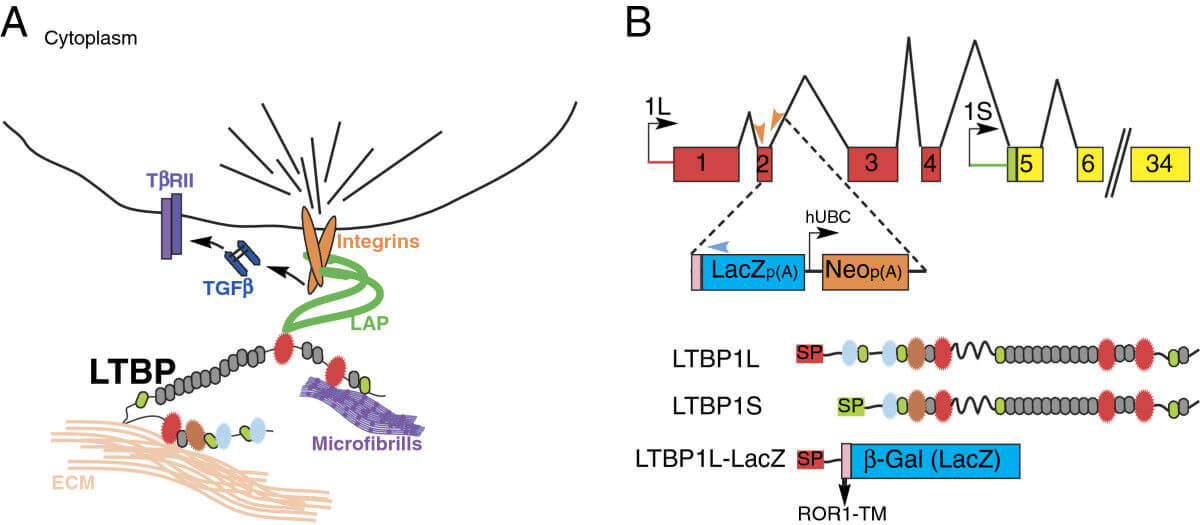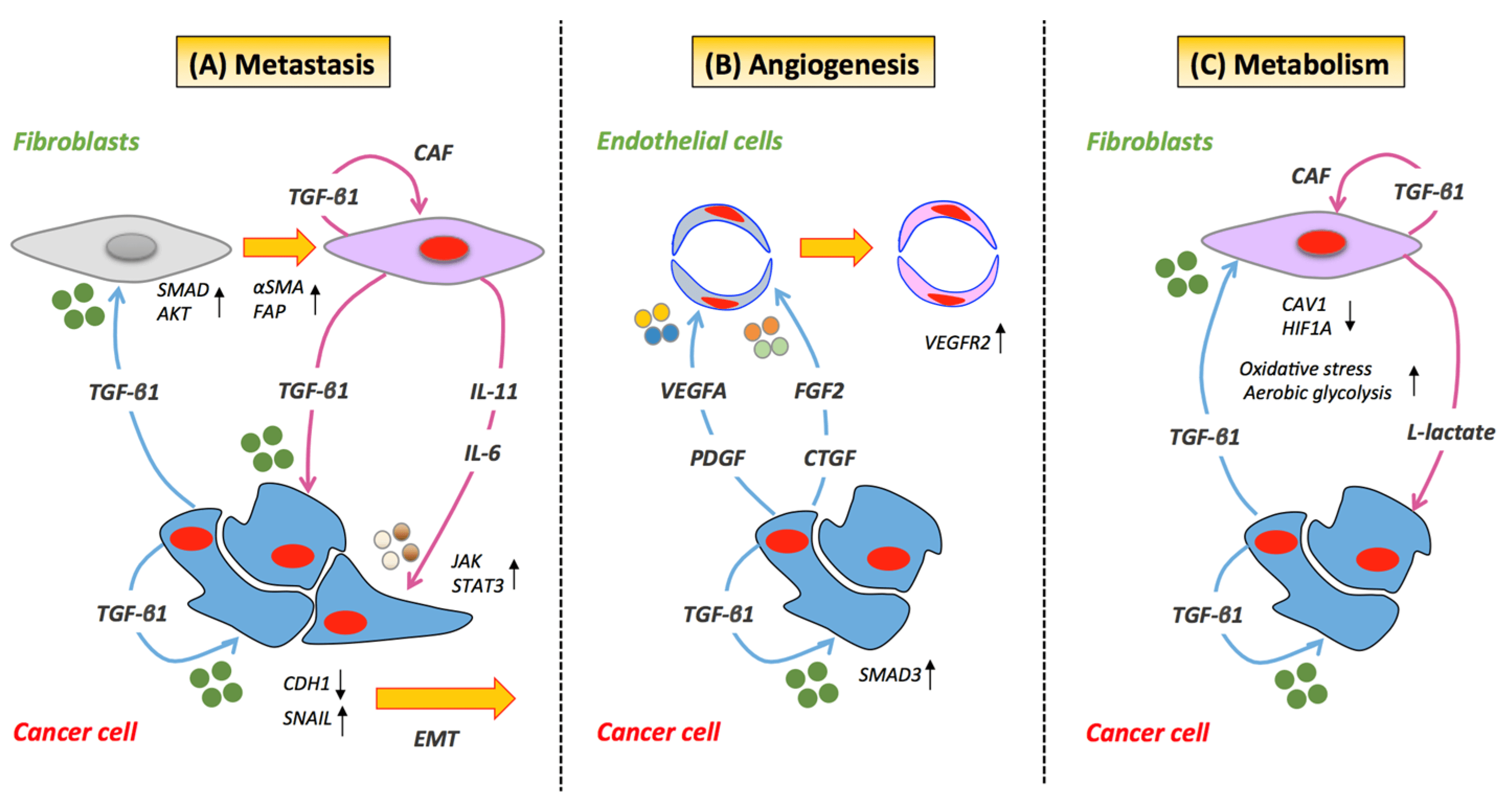As a pioneer company in the antibody development field, Creative Biolabs has gained a wealth of experience in the in vitro diagnostic (IVD) antibody production. Now we provide high-quality IVD antibody development services targeting the LTBP1 marker to help our global customers with the development of immunoassays targeting this marker.
Latent-Transforming Growth Factor Beta-Binding Protein 1 (LTBP1)
Latent-transforming growth factor beta binding protein 1 (LTBP1) is a member of the latent TGF-beta binding proteins (LTBPs) family. This protein is encoded by the LTBP1 gene in human. Secretion and activation of TGF-beta are regulated by its association with latently related proteins and latent TGF-beta binding proteins. The product of this gene transforms the potential complex of growth factor beta to the extracellular matrix, where the latent cytokine is subsequently activated by several different mechanisms. Spliced transcript variants encoding different isoforms have been identified.
 Fig.1 Latent TGFβ binding protein (Ltbp) function and reporter construct. (Chandramouli A., 2013)
Fig.1 Latent TGFβ binding protein (Ltbp) function and reporter construct. (Chandramouli A., 2013)
LTBP1 Marker of Glioma
It has been reported that expression of LTBP-1 increased gradually, from grade II to grade IV, in human malignant gliomas. Accordingly, LTBP-1 has become a novel target for diagnostic and therapeutic monitoring of malignant gliomas. LTBP1 is a latent TGF-β-binding protein. TGF-β is the prototype of a superfamily of pleiotropic cytokines, which are fundamental throughout development and in the maintenance of tissue homeostasis in the normal and diseased state. TGF-β has also a major role in the malignant phenotype of glioblastoma. Biological effects of TGF-β modulating the course of glioblastoma may include the induction of immunosuppression as well as its properties as a tumor progression factor promoting angiogenesis, invasion, and metastasis.
Signal transducer Smad proteins interact with various transcription factors and abnormalities of these regulators of TGF-β signaling may influence the progression of tumors such as glioblastoma. Increased Smad2 phosphorylation has recently been described as an indicator of high TGF-β activity and as a molecular marker of poor prognosis in glioma patients. The high biological activity of the TGF-β-Smad pathway characterizes the malignant phenotype of malignant gliomas and confers poor prognosis to glioma patients. TGF-β is processed by furin-like proteases (FLP) and secreted from cells in a latent complex with its processed propeptide, the latency-associated peptide (LAP). Latent TGF-β-binding protein 1 (LTBP1) covalently binds to this small latent TGF-β complex (SLC) and regulates its function, presumably via interaction with the extracellular matrix (ECM).
 Fig.2 TGF-beta-mediated cancer cell/stromal cell crosstalk. (Costanza B, 2017)
Fig.2 TGF-beta-mediated cancer cell/stromal cell crosstalk. (Costanza B, 2017)
LTBP-1 for Germ Cell Cancer Diagnosis
It has been indicated that the expression of LTBP1 is coregulated with TGFβ1 in various cell types, and the absence of LTBP-1 decreases the activation of TGFβ. TGF-β1 is involved in a lot of pathophysiological processes such as tissue homeostasis, fibrosis and tumorigenesis. Studies have shown that the LTBP-1 expression is elevated from the grade II to grade IV of human malignant gliomas. Furthermore, LTBP-1 is increased in many cancers, including ovarian carcinoma. It has been reported that there was a high expression of LTBP-1 and TGF-β1 genes in ovarian cancer cells. In the respect of the increased LTBP-1 expression in ovarian cancer and its function in promoting the secretion of TGF-β1, LTBP-1 could assist the diagnose of germ cell cancer.
IVD Antibody Development Service Targeting LTBP1 Marker
IVD antibodies are extensively used in immunodiagnostic kits for disease screening, prognosis, and therapeutic monitoring. Through our role as a leading antibody service provider, Creative Biolabs is well-positioned to develop novel LTBP1-specific antibodies for diagnostic uses. With our versatile IVD platform, we also offer immunoassay development services from scratch to commercial IVD kits. We can start with antigen sequences or available antibody pairs.
If you are interested in our IVD antibody discovery services, please contact us for more details.
References
- Chandramouli A., (2013) “Ltbp1L is focally induced in embryonic mammary mesenchyme, demarcates the ductal luminal lineage and is upregulated during involution.” Breast Cancer Res, 15(6): R111.
- Costanza B., (2017) “Stromal Modulators of TGF-β in Cancer.” J Clin Med, 6(1).
For Research Use Only.

